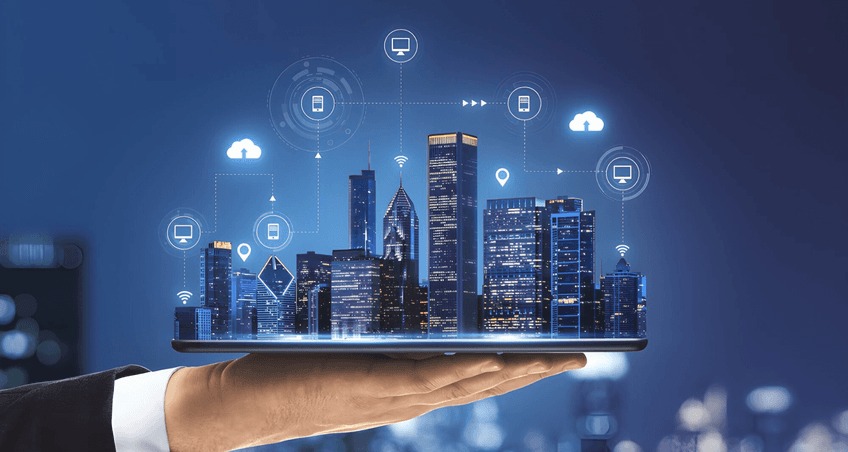As the world’s population continues to urbanize, cities are facing unprecedented challenges in managing resources, infrastructure, and services efficiently. To address these challenges, the concept of smart cities has emerged, leveraging the power of the Internet of Things (IoT) to transform urban development. In this article, we will explore how IoT is being integrated into smart cities to enhance sustainability, improve quality of life, and drive economic growth.
Understanding Smart Cities
Defining Smart Cities Smart cities are urban areas that utilize technology and data-driven solutions to optimize various aspects of urban life. These solutions aim to enhance efficiency, sustainability, and the overall well-being of city residents. Key components of smart cities include connected infrastructure, data analytics, and real-time monitoring.
The Role of IoT The Internet of Things plays a central role in smart cities by connecting everyday objects and infrastructure to the internet. This connectivity enables the collection and analysis of vast amounts of data, leading to informed decision-making and the automation of various processes.
Smart Infrastructure and Mobility
Connected Transportation IoT-enabled transportation systems are a hallmark of smart cities. These systems include smart traffic lights, vehicle-to-infrastructure (V2I) communication, and intelligent public transportation. They reduce traffic congestion, lower emissions, and improve overall mobility.
Efficient Energy Management Smart grids and IoT-powered energy management systems optimize the distribution and consumption of electricity. These systems enable real-time monitoring of energy usage, integration of renewable energy sources, and reduced energy wastage, contributing to sustainability and cost savings.
Public Safety and Security
Surveillance and Emergency Response IoT devices such as surveillance cameras, gunshot detectors, and environmental sensors enhance public safety and security. They provide real-time data to law enforcement and emergency response teams, enabling rapid intervention during critical situations.
Predictive Policing Data analytics and machine learning algorithms can analyze historical crime data to predict crime hotspots and trends. Law enforcement agencies can allocate resources more effectively and proactively address potential issues.
Environmental Sustainability
Smart Waste Management IoT-enabled waste bins and sensors can optimize waste collection routes based on fill levels. This reduces fuel consumption, emissions, and operational costs while keeping cities cleaner.
Air Quality Monitoring Real-time air quality sensors can measure pollutants and provide residents with air quality updates. This information can help individuals make informed decisions about outdoor activities and contribute to efforts to reduce air pollution.
Quality of Life and Citizen Engagement
Smart Healthcare IoT devices in healthcare, such as wearable fitness trackers and remote patient monitoring, promote healthier lifestyles and provide healthcare professionals with real-time patient data. This improves healthcare outcomes and reduces healthcare costs.
Smart Education Connected classrooms and digital learning platforms enhance education by providing students and teachers with access to online resources and personalized learning experiences.
Data Privacy and Security
Protecting Data As smart cities collect and process vast amounts of data, data privacy and security are paramount. Robust cybersecurity measures and data encryption protocols must be in place to safeguard sensitive information.
Transparency and Governance Cities must establish clear policies and regulations regarding data collection, storage, and usage. Transparency in data handling and governance ensures that citizens’ rights and privacy are protected.
The Road Ahead
5G Connectivity The rollout of 5G networks is set to further accelerate the development of smart cities. High-speed, low-latency 5G connectivity will enable more IoT devices and applications, enhancing the efficiency and responsiveness of smart city systems.
Edge Computing Edge computing, which processes data closer to the source, will reduce latency and enhance the real-time capabilities of IoT devices in smart cities. This will be especially important for critical applications like autonomous vehicles and emergency response systems.
Collaboration and Citizen Involvement Successful smart city initiatives require collaboration between government entities, private sector organizations, and citizens. Engaging residents in decision-making processes and seeking their input is essential for building sustainable and citizen-centric smart cities.
Conclusion
The integration of IoT in smart cities is reshaping the way urban areas are developed and managed. With the potential to improve infrastructure, enhance public safety, promote sustainability, and elevate quality of life, smart cities represent a promising future for urbanization. However, it is crucial to address challenges related to data privacy, security, and governance to ensure that the benefits of IoT-driven smart cities are realized while safeguarding the rights and interests of citizens. As technology continues to evolve, smart cities will continue to be at the forefront of urban development and innovation.

